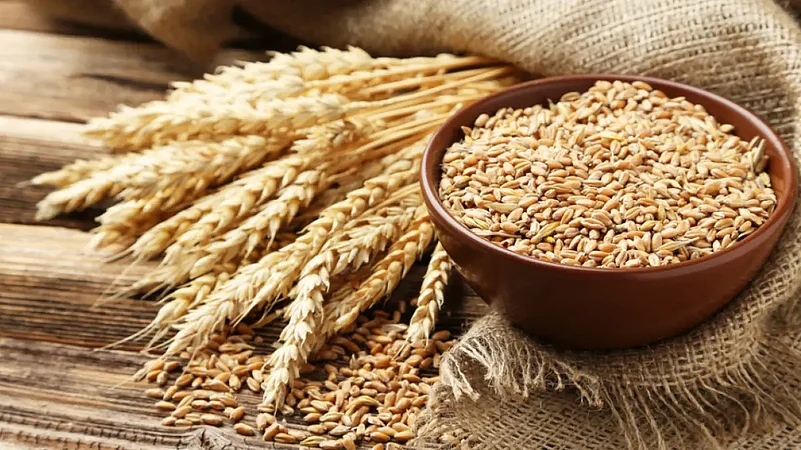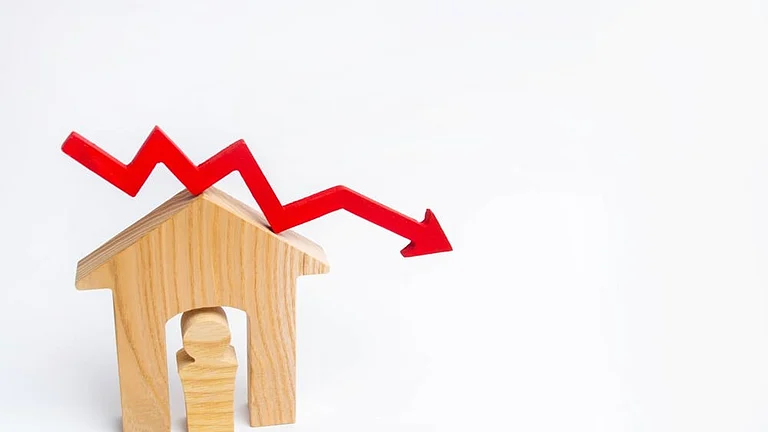One man’s loss is another man’s gain. And here, in a rare circumstance, the Indian farmers seem to be on the gaining side. First, the Centre had to bow in front of the community and revoke its three farm laws, and now, because of the Russia-Ukraine war, their produce is in huge demand in the international market. In fact, the situation has come to a point where Indian farmers are not willing to sell their produce to the Centre as they are being offered better prices for their crops by private traders.
Reports suggest that wheat is being exported at the rate of Rs 24,000 to 25,000 per tonne (2,400 to 2,500 per quintal), which is 19 per cent higher than the government’s set minimum support price (MSP) of Rs 2,015 per quintal. But there’s a segment of experts who have rung the alarm bell. According to them, if India continues to export its wheat in the international market, we may end up increasing the price of the crop for the poor. The government's Public Distribution System (PDS) may also come under stress.
Fearing the Future
As of April 1, 2022, the Food Corporation of India’s (FCI) wheat stock stood at 189.90 lakh tonnes. The stock has declined by 83 lakh tones within a year, primarily because wheat demand under the PMGKAY (Pradhan Mantri Gareeb Kalyan Yojna) in the last financial year of FY22 went up by 74 per cent to 187 lakh tonnes, compared to 107 lakh tonnes recorded in FY21. The BJP-led Centre as well as the Uttar Pradesh government have increased the allocation of free foodgrain to the people in order to fight the economic impact of Covid-19 on the lives of the underprivileged. The Centre has announced that it would extend the free distribution of 5 kg of food grain for poor individuals (around 80 crore) for six months from April to September 2022.
Though the FCI’s mandate is to maintain a buffer stock of 74.6 lakh tonnes only, due to political obligations, the government ends up procuring more than what it can stock. A look at the trends in the last five years shows that India has been producing and procuring more wheat as well as rice each successive year. Wheat production in FY 2020-21 stood at 109.59 million tonnes, of which procurement of 433.43 lakh tonnes happened in Rabi Marketing Season (RMS) 2021-22. In RMS 2020-21, wheat procurement stood at 390 lakh tonnes.
Recently, in a column for The Print, former agriculture secretary Siraj Hussain and independent researcher Shweta Saini, in order to assess and forecast the situation of wheat stocks in the central pool, presented certain scenarios by simulating varying levels of procurement and Open Market Sales Scheme (OMSS) releases for FY 2022-23. “In two of the three scenarios, it appears that by April 2023, the central pool may have less stock than the buffer norm of 74.6 lakh metric tonnes (LMT),” they wrote.
The Russia-Ukraine war has led to a spike in the international wheat prices, which are up by over 80 per cent compared to a year ago. The increase in prices is already having an impact on food inflation in developing nations, especially India, where half of a household’s budget is spent on procuring food items. Government data shows that retail prices grew by 6.95 per cent in March from 6.07 per cent in February, mainly on account of costlier food items. The inflation in the food basket was 7.68 per cent in March, up from 5.85 per cent in the preceding month.
Globally, Ukraine is the sixth-largest exporter of wheat. It exported 20 million tonnes in 2021, accounting for 10 per cent of global exports. In the same period, India’s exports stood at 7 million tonnes. But the war has upset the global supply chains, leading to the unavailability of Ukrainian wheat from the global markets. It’s expected that 30 per cent of the crop would go unharvested in the crop season of 2022-23. The jolt to global supply chains would not only impact Ukraine’s food security but also have larger ramifications, especially on the food security of developing nations.
“This year, the procurement (of wheat) was anticipated to be around 44 million tonnes against which we are now expecting a procurement of about 35 million tonnes, a shortfall of about 9-10 million tonnes. And the reasons are many, including farmers expecting to save the crop for the next two-three harvest seasons to get a higher price later. Our PDS requirement for every year is about 25 to 26 million tonnes," said food and agriculture expert Devinder Sharma.
"Then there’s also the Garib Kalyan scheme. Low procurement would put more pressure on that. If exports are continued at the level at which it’s going on, it would be a very tightrope walk. I am more concerned about the mayhem next year because today we are exporting, and tomorrow the tables will turn and we could end up being the biggest importers. We have a year ahead of us. Any slight disruption in weather and the next crop gets impacted, we would be severely impacted," he added.
While the Food Corporation of India (FCI) is prohibited from exporting wheat, as India has pledged to the World Trade Organisation against making profits from the export of food grains, there is no stopping private traders, who are buying from FCI to export internationally and make huge profits. So far, India has been a minor exporter of foodgrain in the international markets. In 2020, India accounted for just 0.1 per cent of total wheat exports. But with India filling up the void created by Russia and Ukraine in wheat exports, there could be a challenge to India’s export regime. The Doha round of negotiations at the WTO, which has lasted for more than two decades, is stuck due to India’s reluctance to reduce its stock of foodgrain.
Past lessons to avoid future mistakes
According to Sharma, India must not forget the lessons it had to learn in the early 2000s. India had to import wheat for two years despite good production during 2004-05. In the five years up to 2005, India had encouraged the export of wheat in huge quantities resulting in the wheat stock depleting to about 20 lakh tonnes by April 2006 when the then-buffer norm was 40 lakh tonnes. The government was forced to import wheat to the tune of 55 lakh tonnes in 2005-07 to take care of its PDS demand.
“We allowed private companies to buy directly from farmers. This resulted in private players buying a lot of products but there was much less stock left for PDS. Then India had to import 5.5 million tonnes of wheat at double the price they paid to farmers,” Sharma said.
Ashok Gulati, chair professor, agriculture at Indian Council for Research on International Economic Relations (ICRIER), however, avoids the cynicism over wheat exports. “The global prices have erupted and everyone would want to take advantage of that. It is natural behaviour and its benefit of it percolates down to the farmer. The overall music is export as much as you can. Madhya Pradesh was the first state to waive off all fees and taxes to encourage exports. There is so much stock lying without any purpose with the government, way above the buffer stock norm. If the private sector, then buys at Rs 100-200 more than the MSP (minimum support price), the farmer gains, it saves the government from compulsory procurement of so much grain that is not needed. So it’s a blessing in disguise,” said Gulati.
With India announcing free foodgrain for its entire population of poor during Covid-19, the government’s next year's requirement for PDS is unlikely to go up significantly, which makes it easy to estimate how much wheat the government would have to procure to meet its Right To Food Obligation. “During the peak Covid-19 period, our government had announced free foodgrain for its entire population living below the poverty line. It is quite likely that the government’s requirement for PDS will not increase significantly in the current fiscal. Overall, it will prevent the government from keeping the extra foodgrain in its godowns, which are usually wasted every year. The government had already indicated in June 2020, that the foodgrain during that period was sufficient enough to ensure food security for the whole country till the end of 2022,” said Abhijit Banerjee, senior research analyst - agri commodities, Religare Broking Ltd.






























